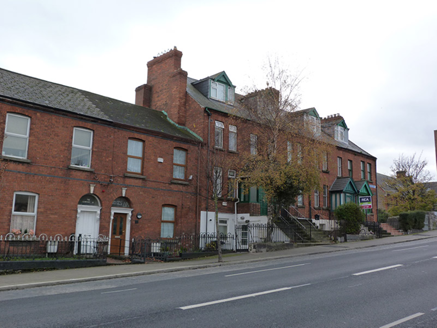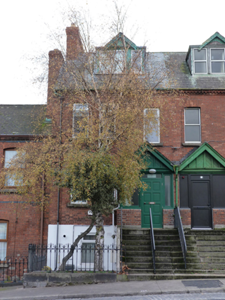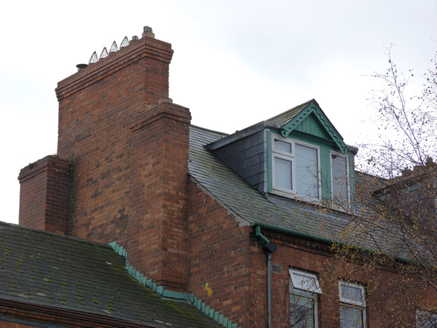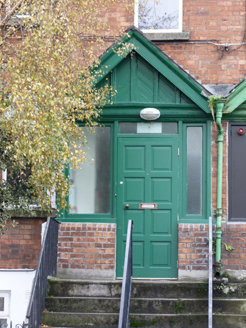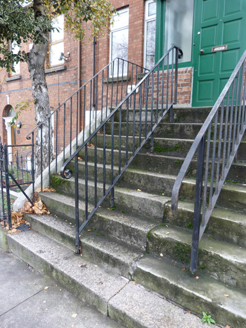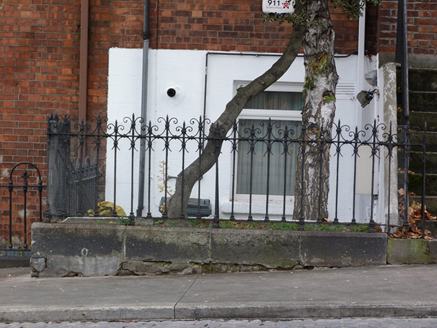Survey Data
Reg No
50120250
Rating
Regional
Categories of Special Interest
Architectural, Artistic
Original Use
House
In Use As
Apartment/flat (converted)
Date
1860 - 1900
Coordinates
316778, 235652
Date Recorded
15/11/2017
Date Updated
--/--/--
Description
End-of-terrace three-bay two-storey former house over raised basement, built c. 1880 as one of four, having attic, gable-fronted porch to front (northwest) elevation, window over entrance bay stepped down from other first floor windows, and with return to rear. Now in use as apartments. Pitched slate roof, with cogged brick eaves course, gabled dormer window to front roof slope with leaded cornice and decorative timber barges and shared flat-roof dormer to rear, brick chimneystack to northeast end with corbelled top and clay pots, mixed cast-iron and replacement uPVC rainwater goods, and slate roof, timber bargeboards and battened panel to porch. Red brick walling to front, laid in Flemish bond over rendered basement walling; yellow brick walling to rear and to side (northeast) elevations, laid in English garden wall bond. Square-headed window openings with timber surround to attic window, concrete sills to floors below, and replacement uPVC frames throughout. Square-headed doorway to porch, with carved timber cornice, plain overlight and sidelights on brick wall over granite plinth, and replacement timber door. Entrance approached by flight of nine granite steps and platform, shared with neighbour to south, having wrought-iron handrails. Cast-iron railings to basement area with decorative wrought-iron details on cut granite plinth wall, with matching gate.
Appraisal
This attractive and well-detailed house retains much of its original form and character and is greatly enhanced by the survival of decorative timberwork, which exhibits skilled artisanship, to the dormers and porch. These details are shared with its neighbours and help create a pleasantly cohesive terrace. The survival of the wrought-ironwork to the railings contributes to the residential character of the streetscape and provides a sense of enclosure marking the private space belonging to each house. Tall, well-detailed chimneystacks, and dormer windows, add interest to the roof line. Moulded brick detailing is used to good effect to subtly enliven the façade, and places this building within a late nineteenth-century context.
